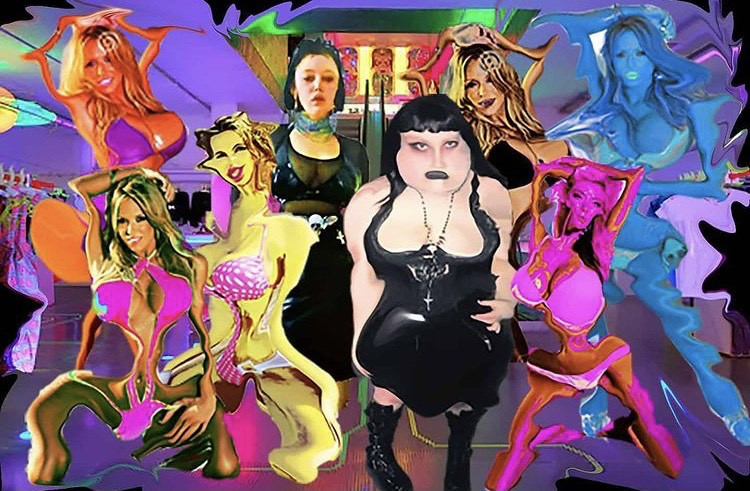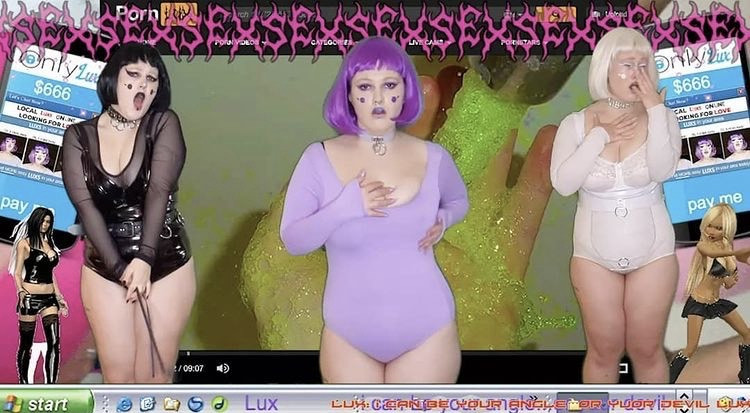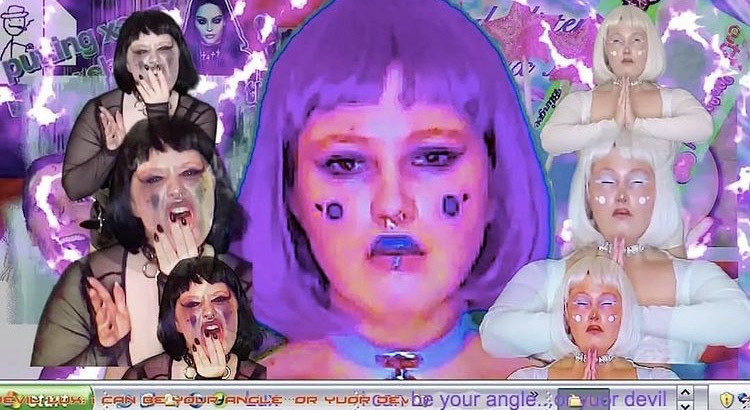Goth artist uses video to critique the complexities of online personas
Concordia students use film and video as a tool to convey their messages
Liz Waterman, a Concordia intermedia and cyber arts student, creates post-internet styled videos. This style of video art creates a final project made up of different visuals found online. Her goal with this digital art form is to guide her viewers to be mindful of what they’re consuming through the internet.
Often influenced by the way the internet has vastly changed concepts of sexuality and spirituality, Waterman uses this medium in a unique and gothic way. She works towards bringing awareness to her viewers surrounding their online personas and why they portray themselves in certain ways on the internet.
Waterman translates this idea through her latest video Lux: i can be your angle...or yuor devil. The title was inspired by a popular meme from a few years back that pictured two versions of the same man with misspelled text. Waterman’s meme-inspired video encompasses the struggle between different forms of yourself put out on the internet.
In the video, Liz can be seen as three versions of herself representing a neutral, angelic, and devilish side to her. A variety of visuals quickly flash throughout the video, overlapped with contrasting inner monologues surrounding a debate about how she should present herself online.

“It’s representative in the ways that you can be pulled in many different directions online. You can be told to present yourself many different ways but ultimately they become similar in the sense that they are all performative and fake,” said Waterman.
At the root of it, the 21-year-old video artist wants her viewers to question their daily performances and the true influences behind them.
Her fascination with video art began while she was in high school because of the ability to easily manipulate visuals in the medium. Since then, Waterman continues to love video art because of its unique ability to shape into whatever story the viewer chooses to see.
“They are allowed to decide what the video is telling them instead of the video telling them what to think,” she said.
“It’s representative in the ways that you can be pulled in many different directions online. You can be told to present yourself many different ways but ultimately they become similar in the sense that they are all performative and fake.” — Liz Waterman
While the rise in media usage has influenced the way some present themselves on the internet, it has also managed to create more accessibility for video artists who use the medium for change. Waterman is one of many artists who use video to bring awareness to certain topics.
Documentary filmmaker and Concordia media studies masters student Becca Redden, uses film to tackle social issues. Through film, she aims to make viewers feel seen, heard and represented, but also hopes for some to walk away with a new perspective on many underheard stories. Redden believes there is a lot more potential now with increased accessibility to film, for artists like her and Waterman to use their platforms for good and not for evil.
“We’re such a visual culture and we spend a lot of time on screens,” Redden said. “How we can reach a lot of different audiences.”
While there is no doubt about the ability to communicate through film and video, Redden says the key is to stay open-minded to all forms of film.

Liz Waterman’s form of video art is a way to communicate the effects of the internet and the way pop culture subconsciously enters our minds.
“Even browsing online you can be absorbing ways you should be thinking or ways in which the market is telling you what you should want or what you should be promoting. The internet is a new sort of reality that we are all trying to navigate,” said Waterman.
As she herself continues to try and navigate it, Waterman continues on with her digital video work. She is currently working on her next project dealing with ideal body types and how they translate into the virtual world.


_600_832_s.png)




